Popular types of milkweed
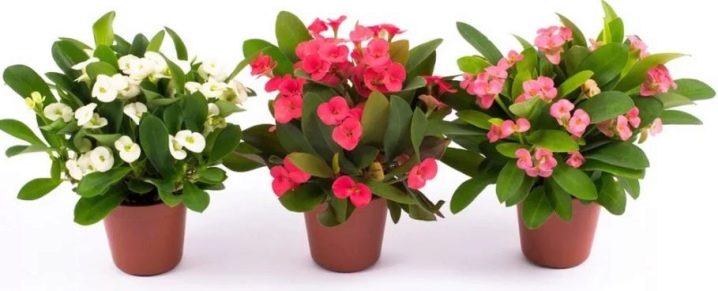
Euphorbia is not one plant, as many are used to thinking, but a whole group. To learn about its huge variety, you will need to consider indoor and garden subspecies.
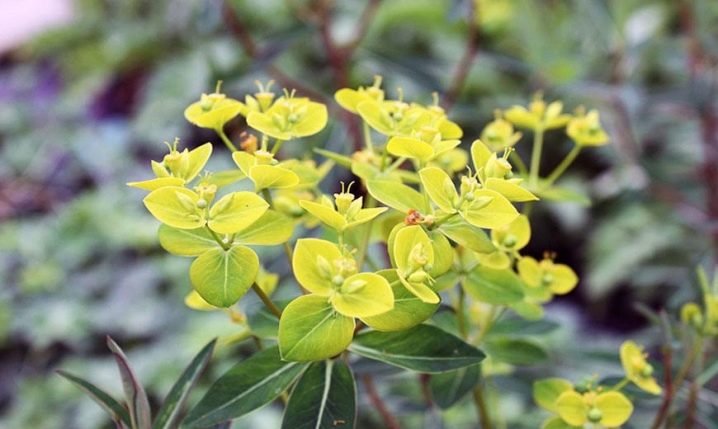
Peculiarities
Euphorbia can be either a decorative indoor flower or a common thorny weed. This plant is also called "euphorbia" in scientific circles. The family has more than 800 different species and subspecies with different descriptions. Milkweed are succulents in hot climates and deciduous plants in cooler regions. Foliage can form in the form of stem spines or wide plates.
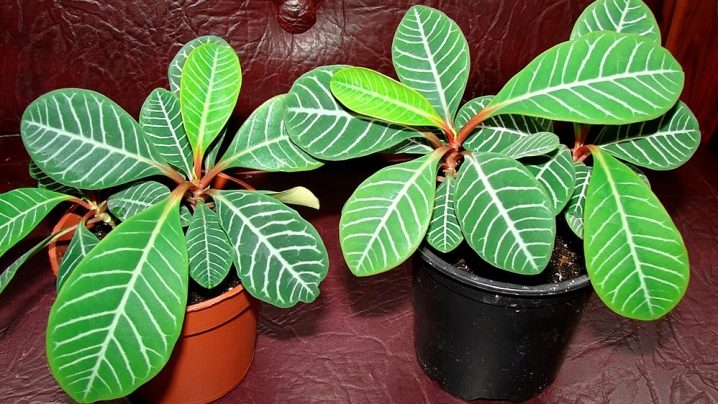
The general characteristic of the euphorbia is a poisonous flower that can serve as a decoration for a landscape or a window sill, depending on the variety. Some indoor species are very common in our country as interior decoration, other varieties are used exclusively for medicinal purposes. It is not difficult for a plant breeder to provide the flower with the necessary conditions for keeping. All species love well-drained soil and plenty of light. Propagated by some by seeds or division, others by cuttings from the tops of the stems.

A greenish-yellow tint is a characteristic color for most plants of this species. Some are capable of growing up to several meters in height. Plants of the described genus grow in Africa, Asia, Europe, as well as in the eastern and southwestern parts of the United States of America. These are trees, cacti or even weeds. Among the most famous species is poinsettia.
The juice of many types of milkweed can irritate the skin and eyes, and is toxic to humans and animals. If most of a large plant is cut, toxins can be released into the air, even causing breathing problems. Some types of milkweed can grow up to 12 m tall. On their crown, yellow flowers are formed that bloom throughout the winter. This species is also called the candelabra tree. Some varieties are succulents, such as "Gingham". It tends to grow best in South Africa.

Poinsettia is a popular herb during the Christmas holidays in the United States. This flower is also quite poisonous, especially if the leaves are eaten. Red foliage forms on the bush, flowers are large and yellow, growing in clusters. But not all plants that are part of the euphorbia family are indoor flowers or used in the garden. Among them are simple weeds. For example, the subspecies Peplus originated in Europe, but is now considered an invasive species in many areas throughout North America. It can grow up to 30.5 cm in height and has green flowers that blend in shade with green juicy leaves. Although the sap from this plant is toxic, it is often used by doctors to remove warts and age spots.
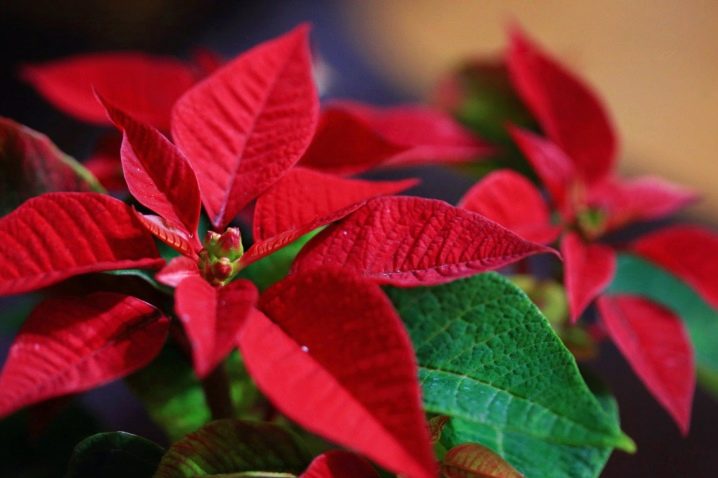
Garden varieties
Consider indoor milkweed varieties.

Comb
The comb-ribbed or ribbed variety keeps the foliage green throughout the year, therefore it belongs to the evergreen. It is a stem shrub with a maximum height of 1 meter. Often the described species is confused with the white-vein, since they have many similarities. If we talk about the differences, then the comb has a network of light veins on the leaves, and the flowers are rather inconspicuous. Sometimes the stems can curl, which does not indicate the presence of a disease, this is such a feature of the plant.The flowers appear on the top of the stem, the bract can be white or pinkish, the flowers themselves are yellow with a green tint. It begins to bloom within a year after planting.
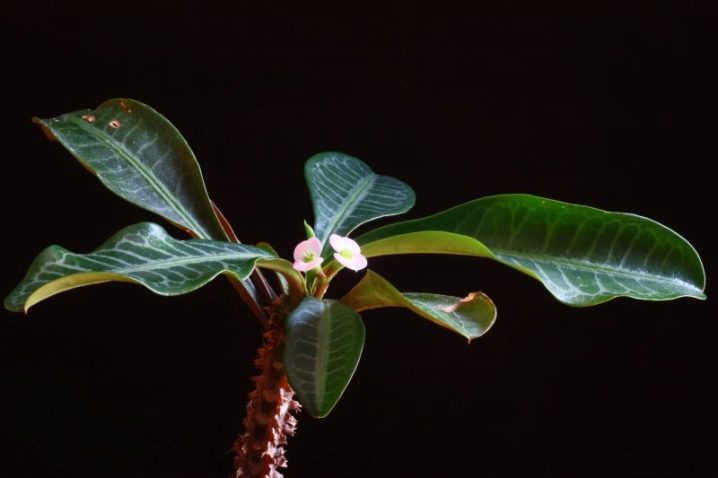
Resiniferous
A shrub that can be distinguished by its many branches at the base. It is never more than 1.5 meters high, but sometimes it grows up to 2 meters wide if there is enough space. From the side, such an indoor flower resembles a bedspread, which consists of stems with 4 sides. The shade of the foliage is greenish-blue. Flowers appear at the edges of the ribs at the crown, they are very small and unattractive yellow. There are small but sharp thorns on the edges.

Lozny
This variety is also called rod-shaped. It is most common in our country. The maximum flower height is 80 centimeters, the stems are thin, straight. Leaves hang down, flowers form in umbrellas, but have a yellow-green tint, so they are not very attractive. Flowering begins by mid-summer. The plant is appreciated not for its flowers, but for its attractive decorative appearance.
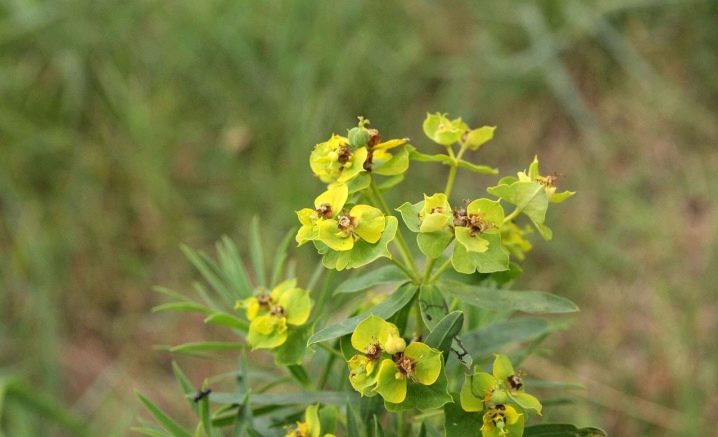
Almond-shaped
A perennial plant, which in scientific circles is called "Purpuria", is found throughout Europe. It has a strong and branched root system, the maximum height of the bush is 70 centimeters. Over time, the trunk becomes stiff. The leaves are small, only 1 centimeter, on the stems that bloom, there can be more - 2.5 cm. The inflorescences are very similar to small bells, there are no petals.
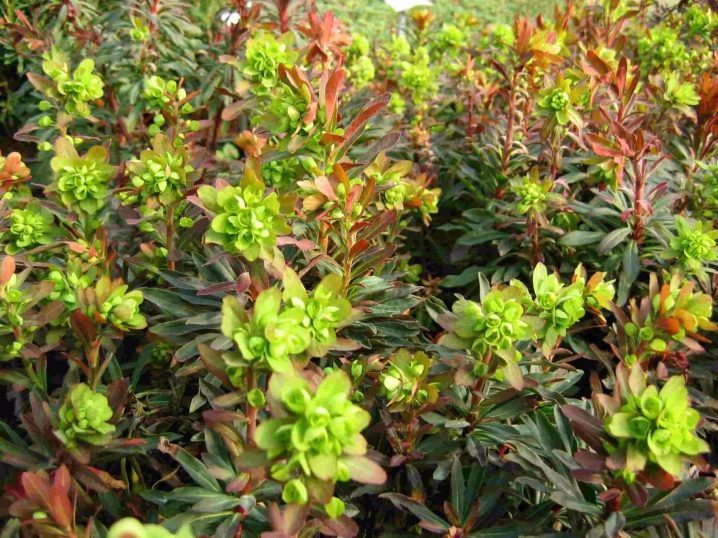
Sweet
A bush with erect stems, can be up to 50 centimeters in height. The foliage is formed abundantly, the flowers are very small, the bracts are reddish. From spring to autumn, the plant takes on an attractive decorative appearance. Best of all, this perennial plant grows in a place with a lot of sun, it can be planted in open ground, but then pruning will be required.
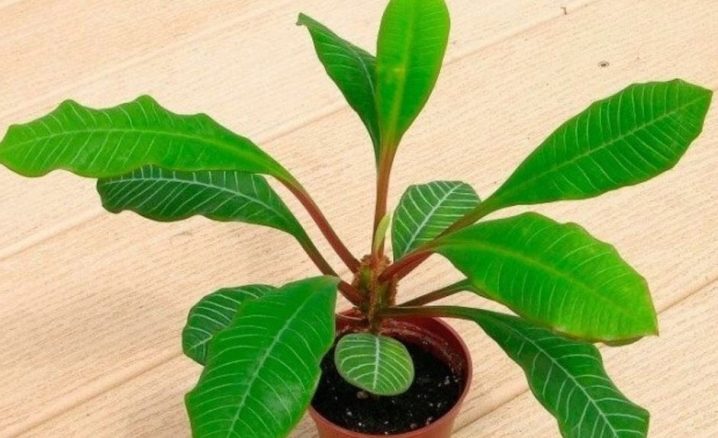
Mirsinites climber
A very beautiful flower, from a decorative point of view, because it has an unusual shape of the stems. They seem to consist of leaves, each rosette is inserted into one another, thus, a trunk is formed, which does not stand, but lies due to the weight. Shoot length can be up to 25 centimeters, the plant can often be seen planted on the lawn. The flowering period is May-June, the flower can be propagated by seeds, which germinate in greenhouse conditions after 20 days.

Akrurensis
A variety that is very similar to a cactus with short but sharp spines along the edge of the ribs. Grows into a large plant, sometimes 9 meters high. This tree-like shape is especially popular. Flowers are collected in inflorescences, yellow, small. Foliage is formed only at the top of those shoots that bloom and on exclusively new stems.
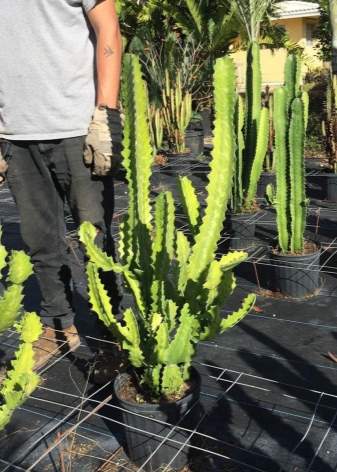
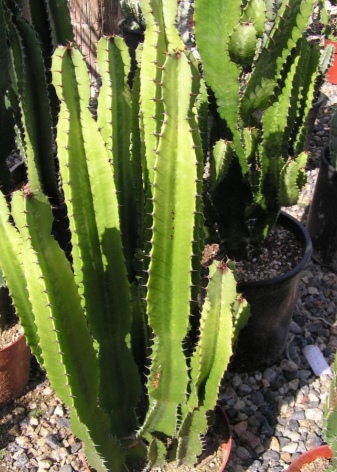
Enopla
It differs from other varieties in the presence of thorns with a red-purple tint. They reach a length of 6 centimeters and are abundantly located over the entire surface of the stems. The bush itself grows up to 50 centimeters and can have both a light green tint and a bluish one. The foliage is small, the flowers from the side are similar to the eyes of a snail.
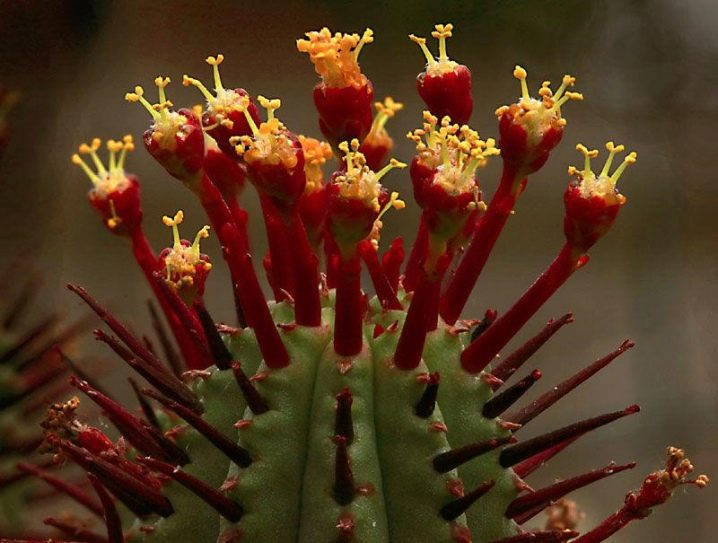
Serpentine
Blooms from mid to late summer. Stem leaves are arranged in a cross, so this variety is difficult to confuse with others. The maximum height is 1 meter, while the bush is more tall than wide. It is loved by breeders for its abundant greenery, since the flowers are very small and almost invisible against the background of a dark green hue.
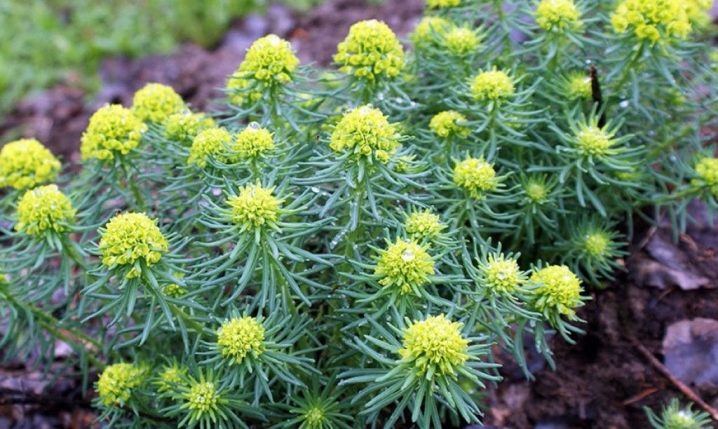
Globular
The dwarf variety does not grow more than 8 centimeters, there are no thorns. Branches of a bizarre shape, like balls, hence the name. The foliage falls early, lanceolate. The flowers are a continuation of the stem, of an unusual shape, but have an unremarkable color.
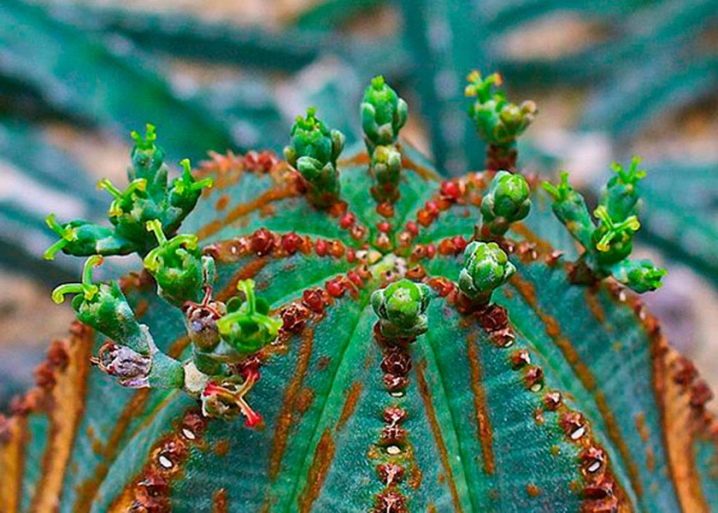
Canary
From the name it is easy to determine the homeland of this plant. It is a succulent plant that forks strongly near the base right next to the ground. The ribs are sharp, there may be 4 or 6 of them on the stem. Small thorns grow on the shoots with age, their length is no more than 5 millimeters.It blooms not with yellow-green buds, but with burgundy ones, which are located at the top of the stems.
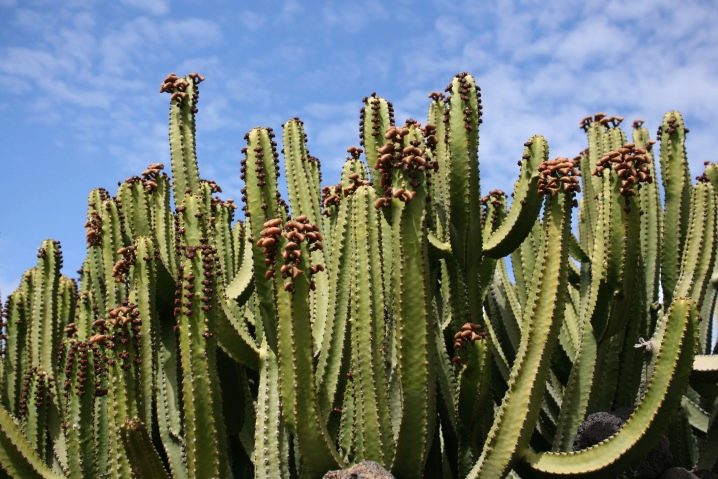
Bighorn
A very interesting, from a decorative point of view, a succulent flower, on the stems of which long and very sharp spines of a light brown shade are formed. The trunk is fleshy, from the side the plant resembles a cactus. Branching is uneven, in tiers. The flowers are yellow, but it is not easy to achieve flowering from this milkweed, since as an indoor flower it practically does not bloom.
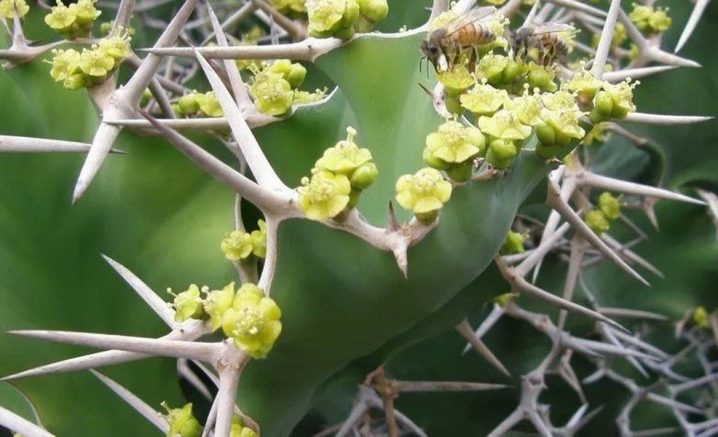
Zhigulevsky
A magnificent shrub up to 40 centimeters high with a very short root system. Flowers appear in May, fruits in June. This species can be propagated exclusively by seeds. The flower is widespread on the territory of our country and nowhere else, and even then not in all regions of Russia. In its natural environment, it can be found in small groups or singly.
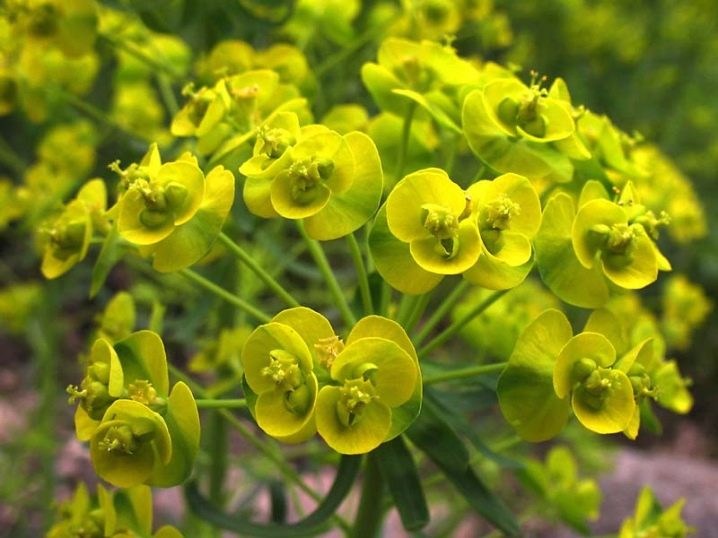
Christmas star
It is not for nothing that most breeders call this euphorbia the most beautiful, since it has an incredible color of bracts that stand out against the background of dark green foliage. A shrub growing outdoors can grow up to 4 meters, so breeders have created a dwarf variety.
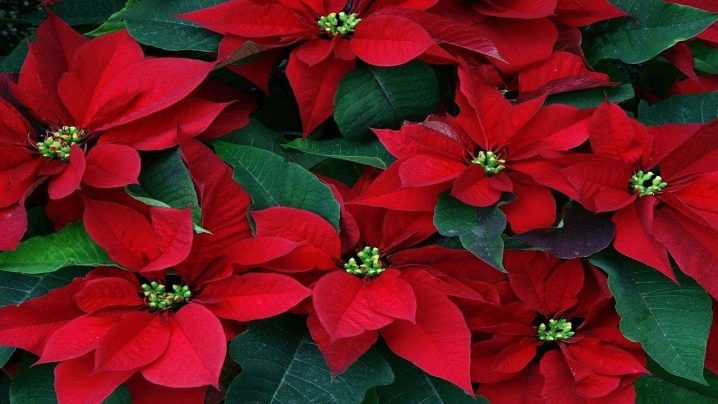
Crown of thorns
In Thailand, the flowers on the crown of the thorns of this plant are said to portend good luck to the breeder. Over the past 20 years, hybridizers have improved the flower, so now this variety is producing more and more flowers.
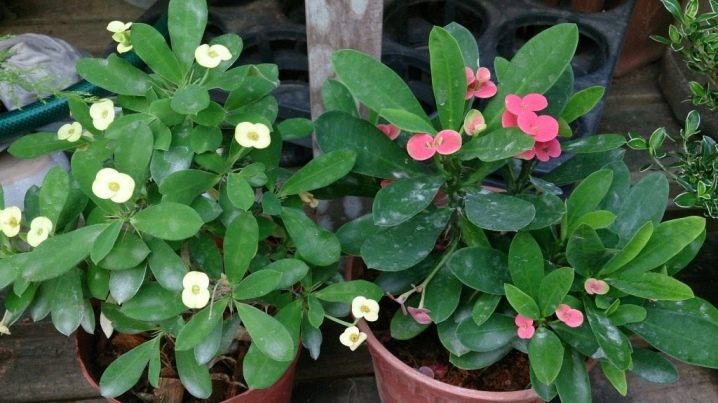
There is also a giant representative among the milkweed, some people know this variety as "great". It is a tree-like plant, reaching a height of 12 meters. Very much like a cactus from the outside, flowers are formed on the ribs, their shade is no different from other varieties. Such a plant cannot be grown indoors, unless you provide it with a huge capacity.
Indoor views
There are no less garden species of milkweed than indoor ones. They are very popular in landscape design because they keep the foliage green at any time of the year. Some varieties have been improved, and breeders have tried to make miniature bushes out of them, suitable for home cultivation. For example, the twig can grow both at home and on the street. Among the most popular other types, the following are worth highlighting.
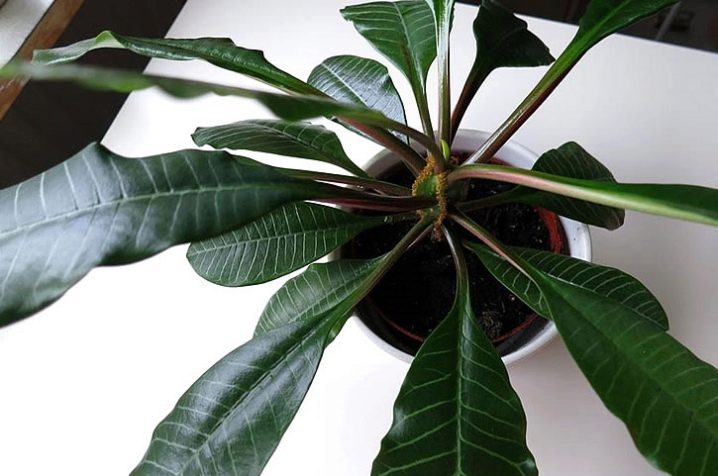
Synadenium
Thornless shrub with spreading shoots that will help create real thickets in the room. In nature, it can stretch up to 3 meters up, it grows very quickly, gaining 25 centimeters per year. Shoots are covered with wood with age, stand upright. The foliage is located on short cuttings, has an oval shape. The surface is smooth, glossy, rather dense. Indoors, the maximum growth, as a rule, stops at 25 centimeters in height and 30 in width.
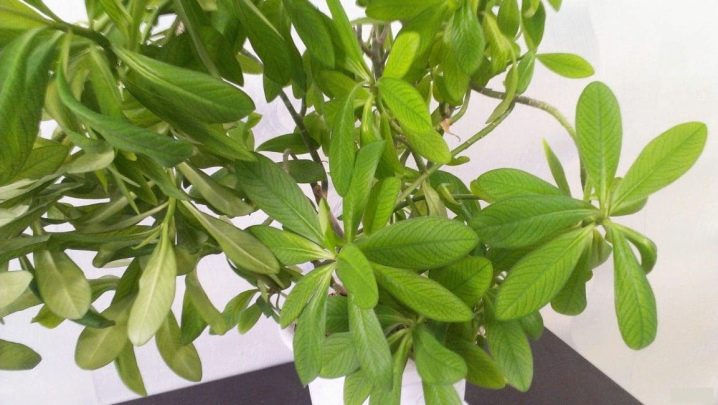
Brilliant
Of the ornamental shrubs, this one is the most common and is considered quite beautiful. Sparse foliage forms on the trunk, thorns are located over the entire surface of the shoots. Depending on the subspecies, the flowers can be of different colors: red, yellow, less often white.
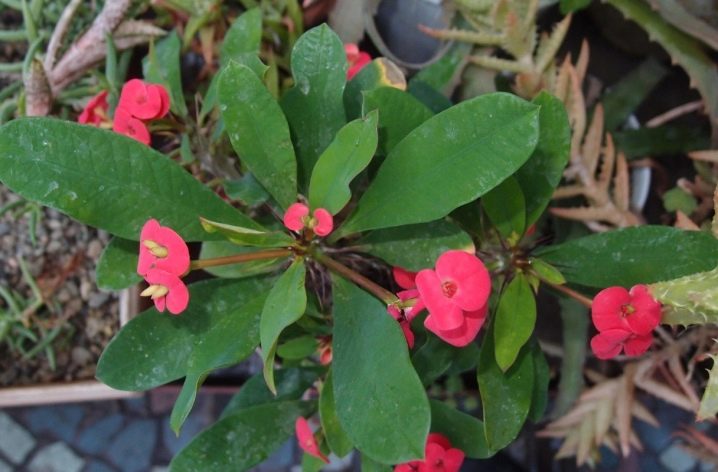
Kristata
This variety is also known as "Lakteya", has an amazing scallop shape, hence its popularity. The flower is not often found, so it is not known to most amateur plant breeders. The trunk is formed alone, along the entire edge of the ridge there are small flowers of a gentle lilac shade. Each new flower forms its own exceptional silhouette.
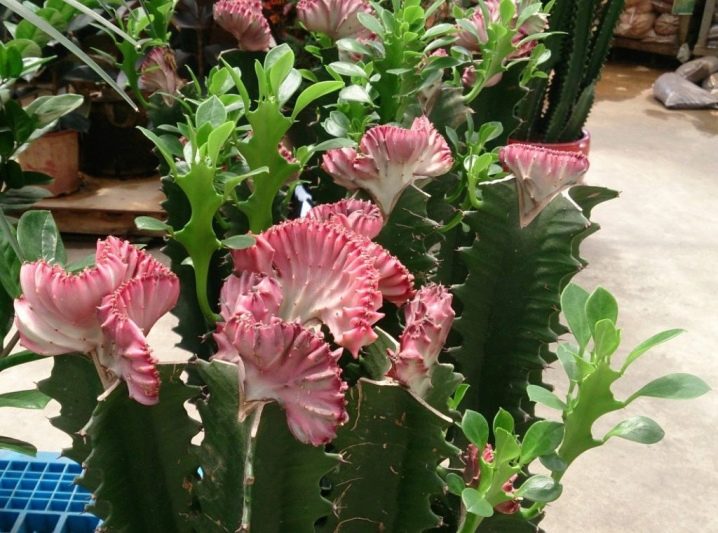
Candelabra
African Euphorbia can grow up to 10 meters in height if it grows in its natural environment. This name is due to the fact that the shape of the crown of an adult flower is very similar to a candelabrum. Along the edge of the shoots, small flowers of a not too bright yellow hue bloom with a thick cap.
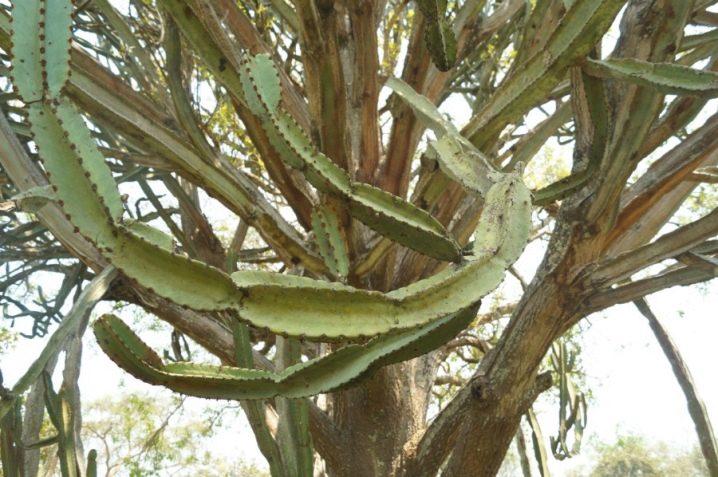
Sungazer
It is used not only as an indoor flower, but also as a medicinal plant. The foliage is soft, in large quantities forms only at the top of the stem, the flowers are not very attractive, small, collected in umbrellas.The bush blooms for a long time, from mid-spring to late summer.
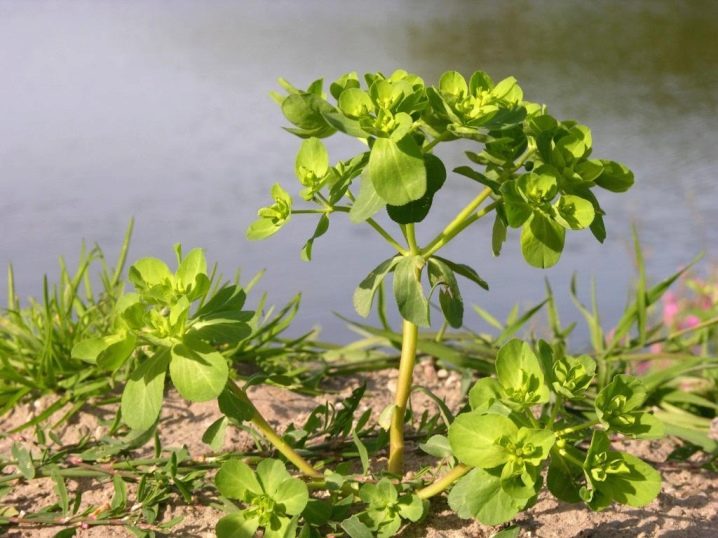
Swamp
A plant that takes on a red tint. The stem is tubular, the mature flowers are rather branched. Differs in axillary peduncles, which are formed at the top.
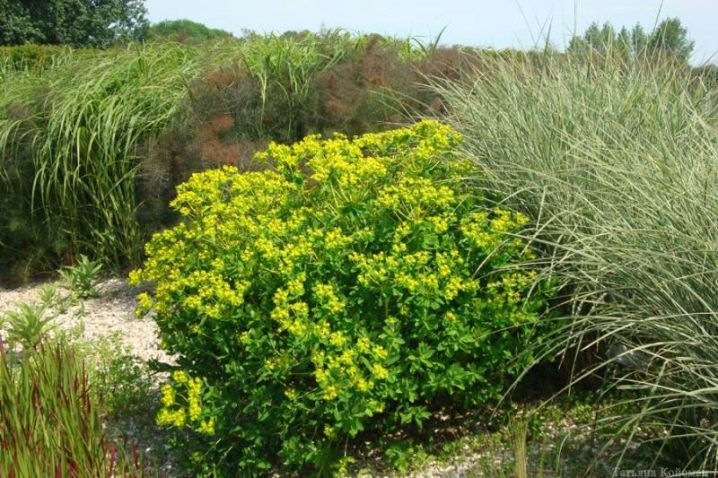
Amma
It is a plant from Yemen and Saudi Arabia that has ribbed edges with short, brown spines.

How to choose?
Depending on where the spurge is supposed to be planted, it is worth paying attention to the corresponding variety. If this is an indoor flower, then it is required of it to be compact, easy to care for, and also have an attractive appearance. Among the options available, you can pick up small bushes of a beautiful and small shape, or you can find a plant with spreading branches that occupies a large space. Such flowers are ideal for large rooms, allowing you to create an original living corner.

If you plan to plant a flower bed, then you will need to choose between an annual plant and a perennial. Among the representatives of the same genus, it is possible to pick up bushes with different decorative characteristics. Such a mix of varieties will perfectly complement each other. Varieties differ in the shade of foliage, height and color of flowering. Euphorbia, which is grown in the garden, can feel great both in the shade and in the sun, takes root quickly, and most often propagates by seeds.

Annual shrubs are ideal for those who prefer to periodically change their landscape design., perennials make it possible to reduce the time spent caring for shrubs. In both the first and second cases, flowers attract little plant breeders; euphorbia is valued for its greenery. There are quite variegated species of this plant with bright, flame-like periflowers. Garden shrubs are advised to just cut off for the winter, but it is not necessary to cover them, they perfectly withstand a moderate cold snap.

For information on how to properly care for milkweed, see the next video.























































The comment was sent successfully.